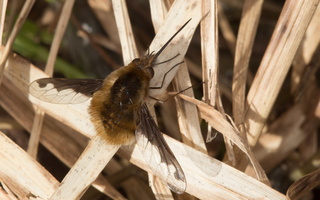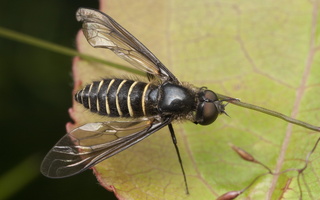
- bee flies
- Wollschweber, Trauerschweber, Hummelschweber, Trauerfliege
- musės zvimbeklės
- pūkmušu dzimta
- bujankowate
https://en.wikipedia.org/wiki/Bombyliidae Adults feed on nectar and pollen, some being important pollinators. The larval stages are predators or parasitoids of the eggs and larvae of other insects. The adult females usually deposit eggs in the vicinity of possible hosts, quite often in the burrows of beetles or wasps/solitary bees. Although insect parasitoids usually are fairly host-specific, often highly host-specific, some Bombyliidae are opportunistic and will attack a variety of hosts.
Bee flies are capable of sudden acceleration or deceleration, all but momentum-free high-speed changes of direction, superb control of position while hovering in mid-air, as well as a characteristically cautious approach of a possible feeding or landing site. Bombyliids are often recognizable by their stocky shapes, by their hovering behavior, and for the particular length of their mouthparts and/or legs as they lean forward into flowers. Unlike hoverflies, which settle on the flower as do bees and other pollinating insects, those bee fly species which have a long proboscis generally feed while continuing to hover in the air, or while touching the flower with their front legs to stabilize their position - without fully landing or ceasing oscillation of the wings. Species with shorter proboscis do land and walk on flower heads, however.

